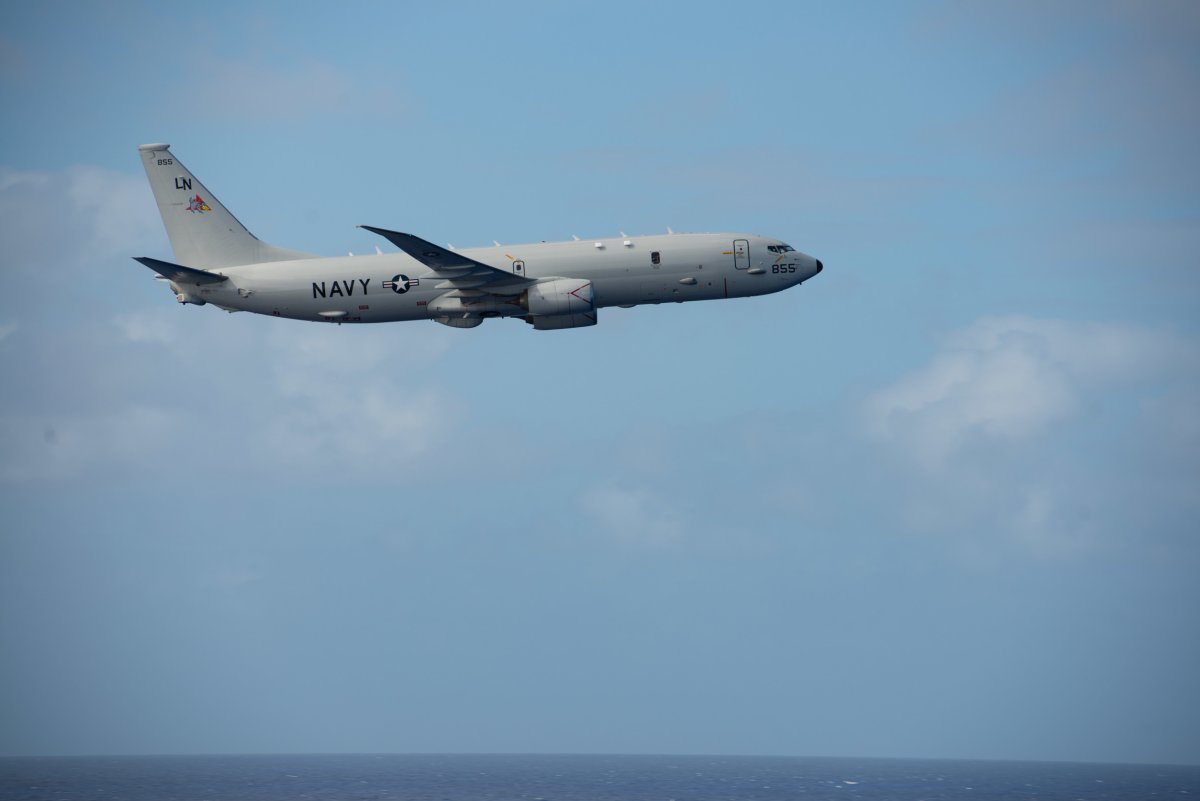The United States sent a military aircraft to the Taiwan Strait, near China, on Tuesday after defense officials from the two sides discussed issues in relation to the contested waterway.
The U.S. Navy said a P-8A “Poseidon” maritime patrol and reconnaissance aircraft passed over the Taiwan Strait in international airspace. It is capable of conducting long-range anti-submarine warfare, anti-surface warfare, intelligence, surveillance and reconnaissance.
The 110-mile-wide waterway separates China to the west and Taiwan to the east. It also links contested waters where China has territorial disputes with neighboring Japan and the Philippines—the East China Sea to the north and the South China Sea to the south.
Beijing has long viewed self-ruled Taiwan as its breakaway province and has refused to renounce the use of force to resolve the cross-strait issue. It has also claimed the Taiwan Strait is under its jurisdiction as the Chinese military operated around the island daily.
The Eastern Theater Command of the Chinese military, which claims to have jurisdiction over the Taiwan Strait, said it deployed warplanes “to follow, monitor, and deal with” the American spy plane. The command emphasized that its troops “will remain on high alert.”
“By operating within the Taiwan Strait in accordance with international law, the United States upholds the navigational rights and freedoms of all nations,” the U.S. Navy said. It stated that the U.S. military “flies, sails and operates anywhere international law allows.”
The U.S. military routinely transits the Taiwan Strait, the last occasion involving the destroyer USS Ralph Johnson on August 22. The U.S. Navy said at the time that it transited through a corridor in the strait that was “beyond the territorial sea” of both China and Taiwan.
Germany, a major NATO ally, also sent two warships to the Taiwan Strait on Friday, defying warnings from China. The German defense minister, Boris Pistorius, said the waterway is in international waters and the shortest, safest route for the warships.

Mass Communication Specialist 2nd Class Caitlin Flynn/U.S. Navy
The most recent Taiwan Strait transit by the U.S. military came shortly after Chinese and American defense officials met in Beijing over the weekend for a round of policy talks.
U.S.-China defense relations as well as regional and global security issues were discussed. Michael Chase, deputy assistant secretary of defense for China, Taiwan and Mongolia, underscored the importance of preserving peace and stability across the Taiwan Strait.
He also mentioned the importance of respect for freedom of navigation guaranteed under international law, the Pentagon said in a readout of the talks.
The Chinese side of the talks was led by Major General Ye Jiang, deputy director of the Central Military Commission Office for International Military Cooperation. The Chinese defense ministry said the two sides exchanged views on issues of common concern.


